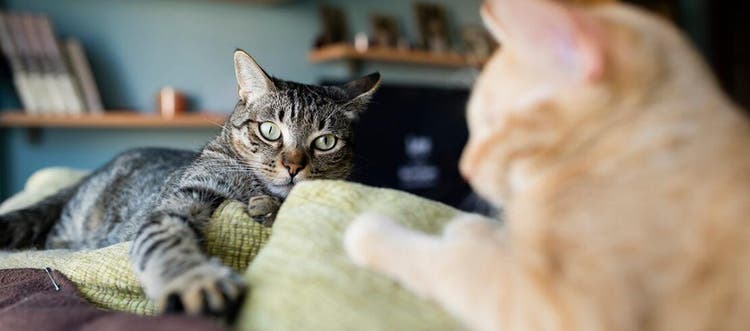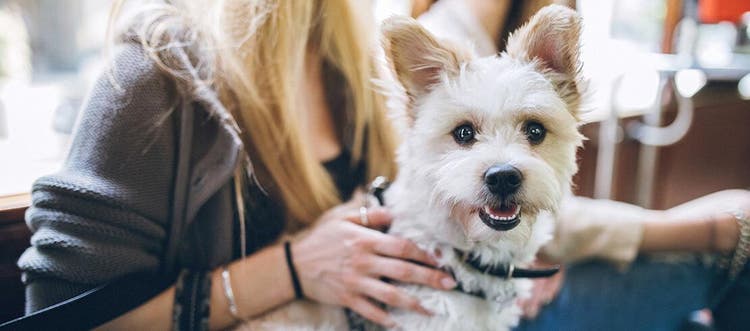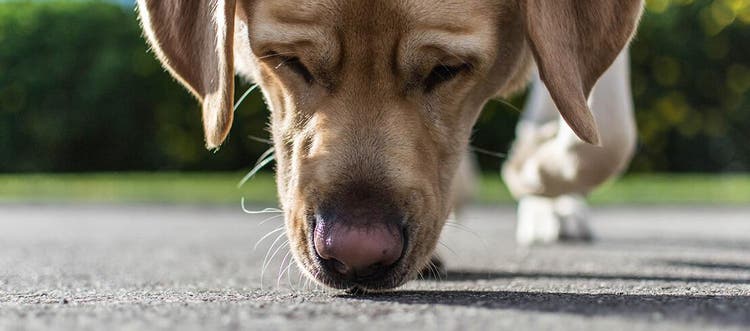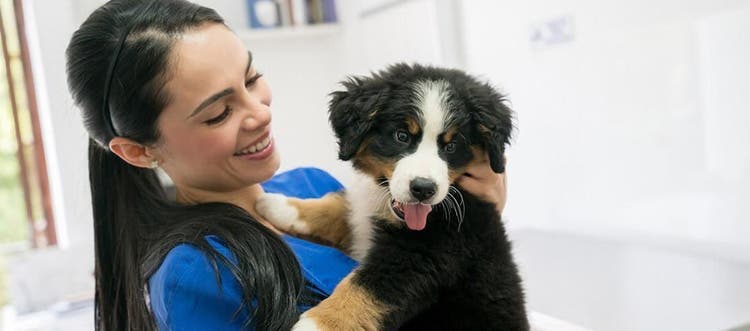Reviewed by Dr Sylvia Shortreed BVSc and Dr Abbie Lam DVM
While diarrhoea is common in dogs, it can be a potentially dangerous condition. Learn the signs, causes and remedies for diarrhoea and other intestinal conditions to help keep your dog healthy and feeling well.
How to identify diarrhoea and other gut issues in dogs
Most dogs suffer from the occasional bout of diarrhoea every now and then. Though each case of diarrhoea in dogs is different, your dog’s faeces are a useful indicator of gut health, and your dog’s diet is the biggest factor in the colour and consistency of your dog’s faeces.
Your dog might be suffering from this unpleasant condition for several reasons, but understanding what a healthy bowel movement looks like in dogs, as well as the risk factors posed by diarrhoea, can help you identify and solve the issue.
Causes of diarrhoea in dogs and puppies
Often, diarrhoea is caused by a simple change in your pet’s diet, or your pet eating something during a walk that irritates their gut. If your pet is on medication, this can also upset their stomach.
Many parasites and infections can also cause diarrhoea, including bacterial infections, viral infections or parasitic infections such as roundworm, tapeworm, hookworm and giardiasis.
Additionally, food intolerances, inflammatory conditions and some more serious conditions can cause diarrhoea.
Always speak to your vet if you’re concerned about your dog and the consistency of their bowel movements.
Signs of diarrhoea in dogs and puppies
If your dog’s stool is entirely liquid or very mushy, then your dog has diarrhoea. The reasons your dog might have diarrhoea range from inconsequential to serious. Though diarrhoea in dogs is common and often nothing to worry about, it’s still worth speaking to your vet, especially if:
- Your dog is not behaving normally.
- Your dog is not eating or drinking normally.
- There is blood (a red or black colour) in the stool.
- Your dog’s belly seems bloated.
- The diarrhoea persists for more than a couple of days.
What to look for in your dog’s faeces
As previously mentioned, your dog’s diet plays a big part in what their faeces look like. As you pick up after your dog, take a moment to examine their droppings to better gauge their gut health on a daily basis.
In general, your dog’s faeces should be a mid-brown colour, but the colour will vary depending on what your dog is eating. A healthy bowel movement should be firm but not too firm, and your dog should go regularly, although not more than a few times a day.
Signs of gut issues in bowel movements
The colour of your dog’s faeces can reveal a lot about what might be going on in your dog’s intestines. Green, yellow, black or red stool are all signs to be aware of in your dog’s bowel movements.
- Green faeces might indicate that your dog has been eating more grass or plant material than usual. Some experts think dogs eat grass when they have an upset stomach, as grass can help them vomit or improve digestion due to its high fibre content. Dogs might also eat grass simply because they are bored or like the taste, so a stool this colour is not always cause for concern.
- Yellow faeces may indicate irritation in your dog’s digestive system. Yellow stool may also indicate a food allergy or intestinal blockage. The yellow part of the dog’s stool is likely mucous that the dog has produced to soothe the irritation. If the yellow colour improves after a few bowel movements, then your dog has probably passed the irritation. However, yellow-coloured loose stools can be an indication of something more serious such as jaundice, secondary to a liver problem, or may be due to the presence of bile, indicating issues in the gall bladder or pancreas. If you notice this colour in your dog’s faeces, make sure to give plenty of water so they don’t suffer from dehydration during potential bouts with diarrhoea and if it persists, visit your veterinarian.
- Red- or black-coloured stool is often considered a medical emergency, as it can indicate blood in the stool. If you notice these signs in your dog’s stool, consult a vet immediately.
Apart from colour, the size and consistency of your dog’s stool can also reveal a lot about their digestive health:
- Hard pellets or hard stool might indicate that your dog is suffering from constipation and/or dehydration. Ensure your dog is getting enough water, and it should clear up. If this condition lasts for several days, or if your dog stops its bowel movements entirely, take them to a vet to check for issues like a bowel obstruction.
- Liquid stool is a sign of diarrhoea in dogs and should be monitored. However, if this condition clears up within a day or two, you typically don’t need to worry, unless it reoccurs often.
What to do if your dog has diarrhoea
If your dog has diarrhoea, monitor them closely and ensure they are getting enough clean, fresh water as diarrhoea can quickly dehydrate your dog. If you’re concerned your dog is also unwell, or that the diarrhoea is more than a one-time incident, then consult your vet.
It’s often unnecessary to withhold food from dogs with diarrhoea, particularly in puppies that do not have the bodily reserves of older dogs. However, your dog’s normal food may be too rich for them to cope with at this time, so your vet might recommend that you give them something bland (such as boiled, boneless chicken and cooked rice), and to give smaller portions four to six times a day.
While diarrhoea often resolves quickly, if it persists dogs can suffer from dehydration. More importantly, diarrhoea can sometimes indicate a more serious problem, so always speak to your vet for advice if you are concerned.









